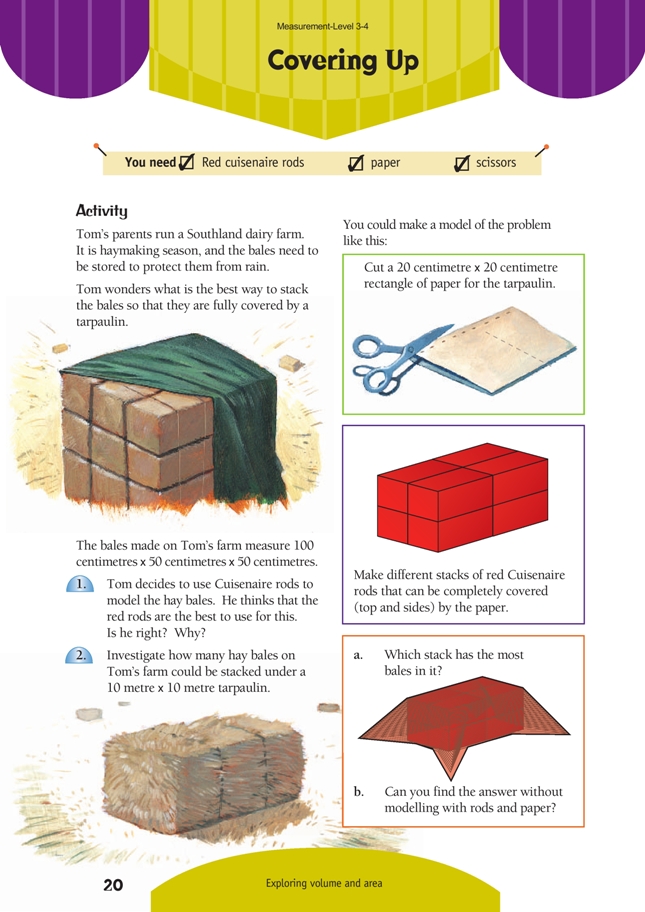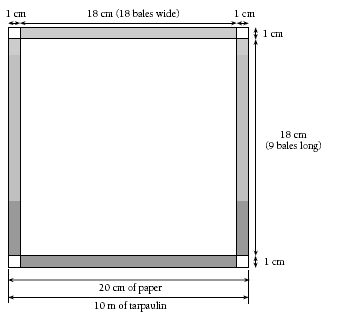This is a level 4 measurement activity from the Figure it Out series.
A PDF of the student activity is included.
Click on the image to enlarge it. Click again to close. Download PDF (300 KB)
calculate volume and area of a cuboid
FIO, Level 3-4, Measurement, Covering Up, page 20
paper and scissors
This activity encourages students to use a scale model to solve a volume measurement problem. It is very important that they understand the scale used so that the connection between the Cuisenaire rod and the hay bale is understood.
The red Cuisenaire rod has dimensions of 2 centimetres x 1 centimetre x 1 centimetre. The hay bales are 100 centimetres x 50 centimetres x 50 centimetres, so the scale is 1 : 50. Make sure that the students understand that the 20 centimetre x 20 centimetre paper model of the tarpaulin is also to a scale of 1 : 50. Hence, 2 centimetres of paper models 1 metre of tarpaulin.
If working with both metre and centimetre units becomes a source of error, discuss the importance of working in a common unit. This could be either centimetres or metres.
You may need to remind the students that the tarpaulin must completely cover the top and all four sides of the haystack. This means that each dimension of the tarpaulin must be able to cover up one side, along, and down the other side of the haystack. So the higher the haystack, the more tarpaulin is needed to cover the first side and the less tarpaulin there is left to cover the other sides of the haystack.
For a two-bale-high haystack:
Observe the students to see if they are trying a systematic approach. If necessary, suggest that they model haystacks that are one bale high, two bales high, and so on. Encourage them to record on a chart the dimensions of each stack while comparing the model to the haystack it represents.
Note that the most bales that can be stacked under a tarpaulin are 294 in a three-bale-high haystack. After that, the number of bales decreases. You could discuss with the students why this happens. Points to discuss include the relationship of volume to surface area and the amount of tarpaulin at the corners, which cannot be used to cover any hay bales.
By organising the data systematically, some students may be able to predict the dimensions of the models without making them. This is the purpose of the last question.
As an extension, you could vary the dimensions of the tarpaulin or the hay bales.
Answers to Activity
1. Yes, he is right. Red Cuisenaire rods measure 2 x 1 x 1, the same proportions as the hay bales (100 x 50 x 50).
2. a. Under a 10 x 10 m tarpaulin, 162 bales can be stacked in a one-bale-high
haystack, 256 in a two-bale-high haystack, 294 bales in a three-bale-high
haystack, and 288 in a four-bale-high haystack. After the three-bale-high
haystack, the numbers of bales decreases. So the three-bale-high haystack has the
most bales in it (294).
b. You could work this out without modelling it if you organise your data
systematically. For example, you could use a table like this:



